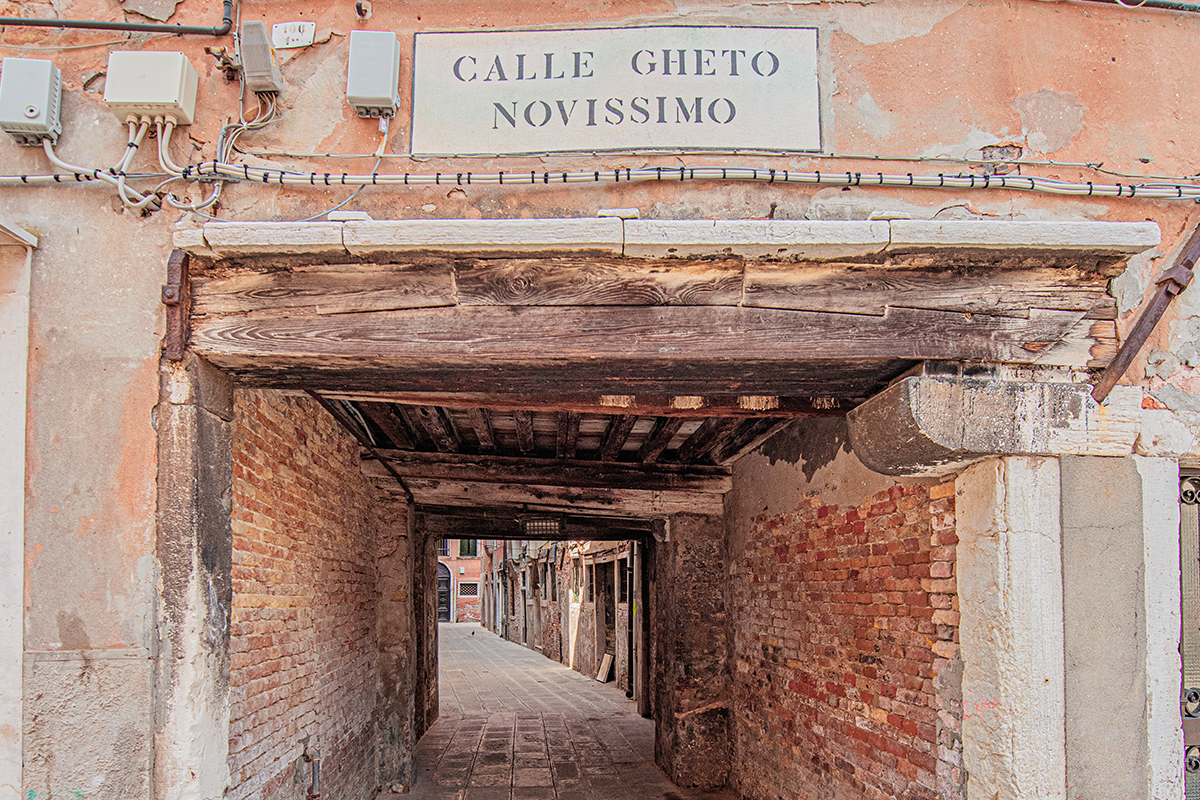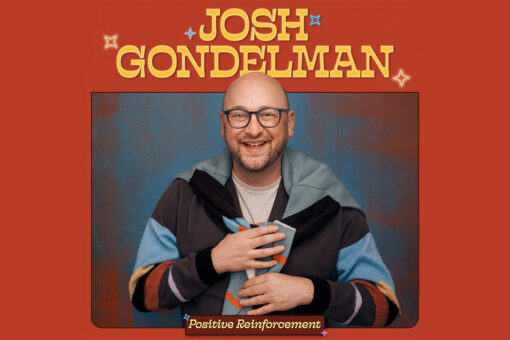What’s the image that comes to mind when you think of a ghetto? The answer depends on where you come from.
Frank London, of Klezmatics fame among other musical projects, is challenging perceptions of the ghetto with his new compilation, “Ghetto Songs.” The 12-track record comes to us from the medieval cobblestones of the historic Venetian Jewish ghetto, where London was first inspired to take listeners on a musical journey to ghettos around the world.
“The culture that comes out of [the ghetto] is a very concentrated look at whoever those people are,” London tells Alma. “You get a very intense view of what Polish, Yiddish-speaking Jews were like and of the music of Black South Africans in the townships.”
In its tour around the world, “Ghetto Songs” also stops by African American neighborhoods like Watts and Harlem, as well as the Moroccan Jewish ghetto of Mellah. Listeners are taken on a ride through these places with songs like the Yiddish folk tune “Minutn fun Bitokhn,” written by Mordechai Gebirtig in the Krakow Ghetto. Sveta Kundish, a Ukranian-born cantor in Germany, sings Gebirtig’s bouncy melody, encouraging his fellow Jews to stay hopeful for the end of the war even if they must dance their way to the executioner. (After all, Haman himself eventually met his end, too.)
Kundish is one of the more prolific artists on the record, lending her operatic vocals to six of the album’s 12 tracks. Lebanese American tenor Karim Sulayman shows up in seven tracks and sings the English alongside Kundish’s Hebrew on “Ve’etah El Shaddai.” Sulayman, a 2019 Grammy Award winner for Best Classical Solo, ends the record with Kundish, again, singing a powerful, dramatic rendition of “Maoz Tsur.” The Hanukkah staple celebrating Jewish deliverance from ancient evils is a fitting finale for London’s musical journey.
Some form of the production had existed in the back of London’s head for a few years. In 2015, he received a call from Beit Venezia, an organization looking to revitalize Jewish cultural, religious, linguistic, and academic life in Venice; the historic ghetto is its home base. Beit Venezia was planning a 500th year commemoration of the ghetto’s 1516 opening, and they asked London to develop a project for the event.
“I came up with the idea of ‘Ghetto Songs,’ which on one hand would look specifically at the music that came first and foremost out of Venice and the Venice ghetto. Then it could extend from that to the local Italian Jewish ghettos, and from that to the world’s ghettos,” London explains. “It was reflecting Beit Venezia’s worldview, which is also my worldview: You look at the particular to give you insight into a bigger global picture.”
The project took a momentary backseat while London worked with theater director Karin Coonrod on a production of “Merchant of Venice” in the Venice ghetto. Eventually, though, the opening number of the musical became the leading track of “Ghetto Songs,” featuring the aforementioned Sulayman.
Three years later, London was invited to perform “Ghetto Songs” at the Elbphilharmonie in Hamburg. “So then it was time to actually create the project out of the idea.”
From the beginning, London was determined to use musicians from all over the world, including a mix of artists living nearby in Berlin: percussionist Kenny Wollesen, who’s performed and toured with Tom Waits’ band, as well as a variety of Italian, American, and British musicians. The performers came together in Hamburg and created the live “Ghetto Songs” concert.
After performing in Hamburg and Venice in 2019, the show was put on hold thanks to the pandemic. Follow-up performances throughout Europe were cancelled. But “Ghetto Songs” was far from dead. Beit Venezia called London up in September of 2020.
“They had gotten a grant to do a project that promoted their Venetian ghetto culture,” London explains, “with the only purview being that the thing had to be done by the end of the calendar year. So we had three months.”
Travel restrictions made it impossible for London to use his entire roster of European musicians. Plus, he didn’t want musicians recording separately and sending files out of their living room. So the tracks were recorded in New York City.
“I used New York musicians, we did COVID tests and got a studio where we could be totally isolated from each other but play together,” says London. “And we recorded the entire thing in three days.”
Recording with London, on trumpet, and his musical guests were the aforementioned Kenny Wollesen, guitarist Brandon Ross, accordionist Ilya Shneyveys, cellist Marika Hughes, and bassist Gregg August.
London’s idea of “Ghetto Songs” is to explore the music and the culture that emerges specifically out of a ghetto. It asks the philosophical question: Is there a commonality on any level between all different ghettos in the world?
London considers the question mostly rhetorical, but pushes listeners to think about their own answer while listening. For him, there are obvious commonalities — for instance, how ghettos enclosed certain groups of people, whether he’s looking at an African American neighborhood cut off by a highway or, as was the case with Polish Jewish ghettos, a literal wall that locked them in.
As an example, London points to South Africa’s kwela music, or jive, to highlight a musical genre that developed quickly out of a ghetto. “I think of it like a petri dish,” he says. “And I love the analogy because you’re ‘growing a culture.’”
You can hear the South African rhythms at play in “Accordion Jive,” a cheery tune with the kind of drumbeat that would kick off a street party and a freewheeling electric guitar dancing wherever it wants to go. The three-minute track feels like a celebration of sorts, which speaks to what London intended in this compilation.
“I don’t ever want to say we celebrate the fact of ghettos,” he says. “But certainly we celebrate the vitality of the people who are in ghettos and the way that culture emerges triumphantly —that sort of celebration of the human spirit. Even in these deplorable, horrible situations, people express their culture through music and through song. And I feel like every song has a little bit of an edge because of that.”



